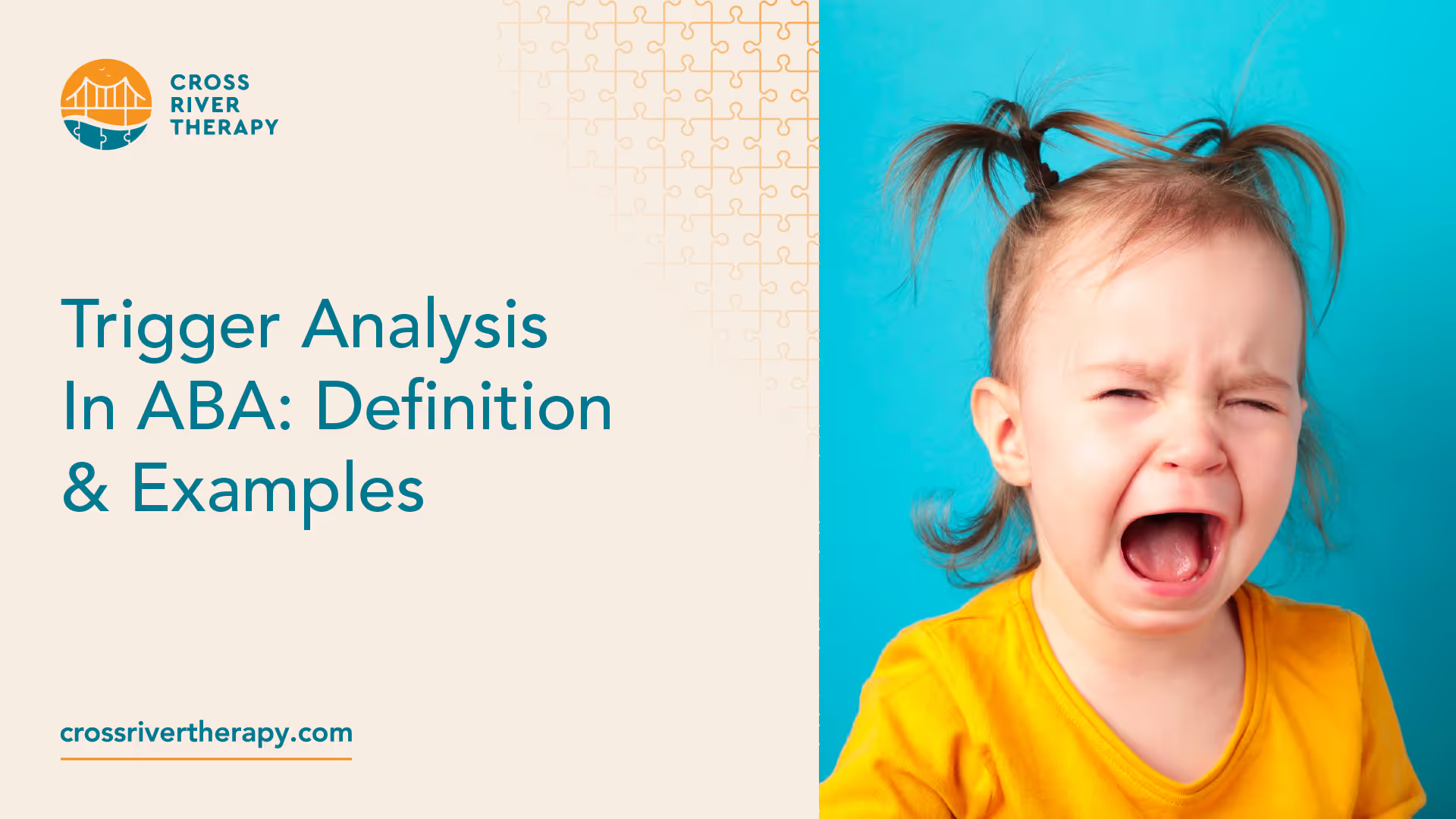Trigger Analysis In ABA: Definition & Examples
Trigger analysis is a segment of ABA therapy where children are taught by therapists to pinpoint the behaviors and emotions that happen before, during, and after an event that takes place.


What is Trigger Analysis in ABA therapy?
Trigger analysis is a segment of ABA therapy where children are taught by therapists to pinpoint the behaviors and emotions that happen before, during, and after an event that takes place. It allows them to comprehend how certain actions they take can impact the environment around them.
As a useful technique, trigger analysis can help to find triggers in the behavior of children that have autism. This is done by finding out which behaviors are connected, thereby building an intervention schedule around what's shown.
In ABA therapy, trigger analysis is a method used in the study of different elements which lead up to a patient's reactions that are deemed unfavorable.
Using methods, therapists can understand what triggers them.
Trigger analysis is also predicted on the concept that unwanted behavior doesn't occur out of anything. Rather, every behavioral issue maintains its triggers that can be targeted and monitored through regulation.
As a system, trigger analysis is taken advantage of in ABA treatment to help monitor and gauge the behaviors to better mark up ways that are connected to specific levels of behavior.
It's done to assist ABA therapists in targeting the catalysts that bring forth behaviors that are assessed. It can help give the therapist a large amount of information related to the trigger and the behaviors following it afterward.
The stimulus, sometimes called a circumstance, that begins a negative behavior reaction is called a trigger.
Trigger analysis is often used by people outside of ABA as well, such as teachers, parents, and other types of caregivers of children.
They do it to find the root of target behaviors, helping them to reinforce more desirable behavior in the end. It can be done by using rewards or other incentives. Penalties in some forms are also suitable for use.
Benefits of Trigger Analysis
Taking advantage of trigger analysis methods is very useful for children in more than one area or situation.
Their ability to socialize can greatly improve, helping to build better awareness of themselves and their surroundings. Their impulsive behaviors can be identified by them, encouraging better self-control.
When done appropriately, ABA principles can assist in building environments that are good for kids.
They can better succeed and prosper during and after the therapy is over once these skills are taught to them.
However, knowing what triggers a child's certain behaviors deemed challenging allows for a better understanding of the needs children have, including how parents can be better advocates for their child. In the process, they often need additional support and amenities in their homes to help with their care.
But knowing the behaviors and resources available can provide the largest benefit to the autistic. Things like acceptance, inclusion, independence, and healthy social life are some of the long-term effects.
Examples of Trigger Analysis
In this example, a therapist reads the notes of the final portion of a triggered analysis to help them understand how such behavior impacts the child.
This relates to what the child is wishing to get from acting with poor conduct. It's important since the notes can help the therapist give good responses that aren't rewarding to the child.
Even if the teacher wanted to be understanding and compassionate toward the child, that would probably reinforce the habit which was deemed a problem.
Recent News
Related articles

Working With Autistic Children: 10 Career Options
Want to work with autistic children? Here are 10 career options for you to consider.

What Is The Age Limit For ABA Therapy In Indiana?
Find out what the age limit is for receiving Applied Behavior Analysis (ABA) therapy in Indiana.

What Is The Age Limit For ABA Therapy In Arizona?
Find out what the age limit is for receiving Applied Behavior Analysis (ABA) therapy in Arizona.

Verbal Operants In ABA: Definition & Examples
In Applied Behavior Analysis, verbal operants are a type of verbal behavior.

Token Economy: Examples & Applications in ABA
A token economy is a procedure that was developed to help reduce maladaptive behaviors and increased desire behaviors by providing a tangible conditioned reinforcer.

Trigger Analysis In ABA: Definition & Examples
Trigger analysis is a segment of ABA therapy where children are taught by therapists to pinpoint the behaviors and emotions that happen before, during, and after an event that takes place.

Variable Ratio Schedule & Examples
A variable-ratio schedule is a random reinforcement where responses are reinforced following varied responses afterward.

Task Analysis In ABA Therapy: Examples & Strategies
Task analysis is a process of teaching that divides complicated activities into sections involving easier steps for students to more easily take.

Stimulus Equivalence In ABA: Definition & Examples
Stimulus equivalence shows how relationships can manifest among different types of stimuli in different situations.

Speech Therapy For Autism: ABA vs. Speech Therapy
ABA therapy can help individuals with speech impairments learn to better identify and utilize the language skills they already have.

Stimulus Control Transfer ABA: Definition & Examples
Stimulus control is defined as an expression used to detail circumstances where a behavior is triggered by the existence or absence of a stimulus.

Social Validity In ABA: Definition & Examples
Social validity is the acceptance of interventions concerning behavioral changes.

